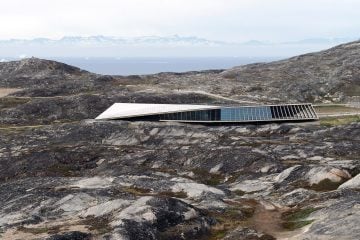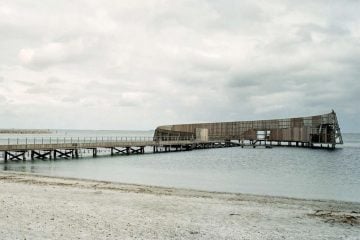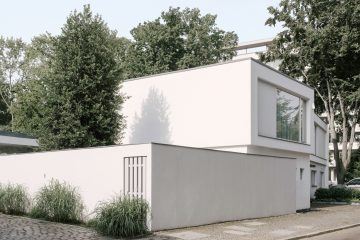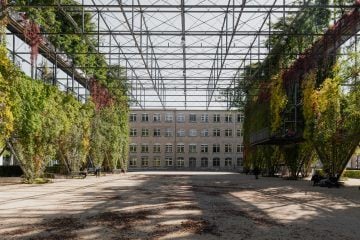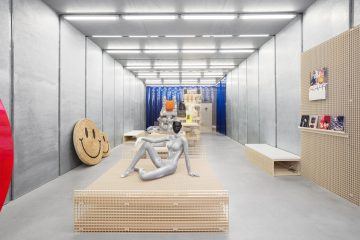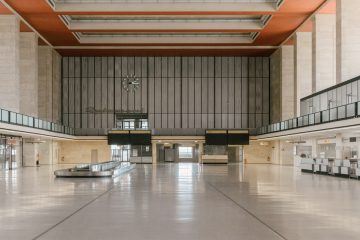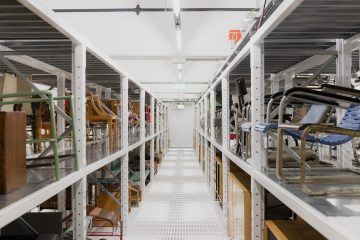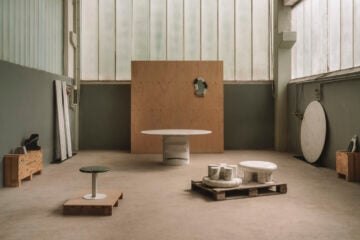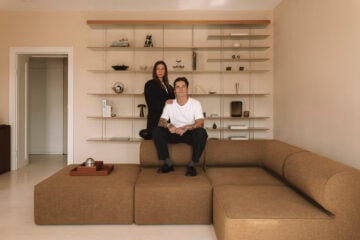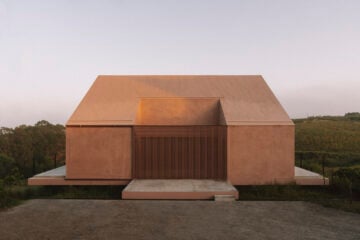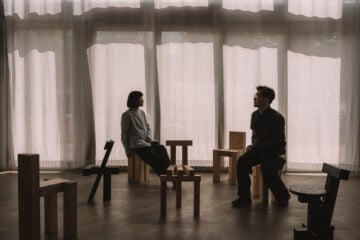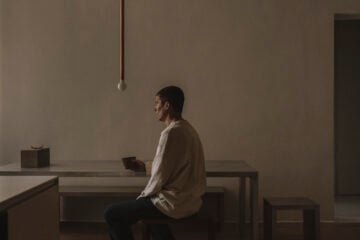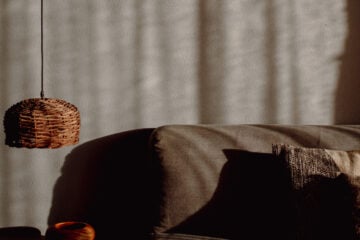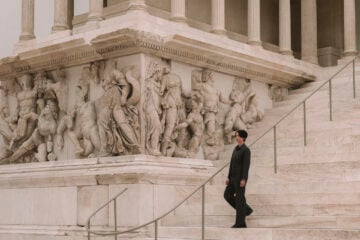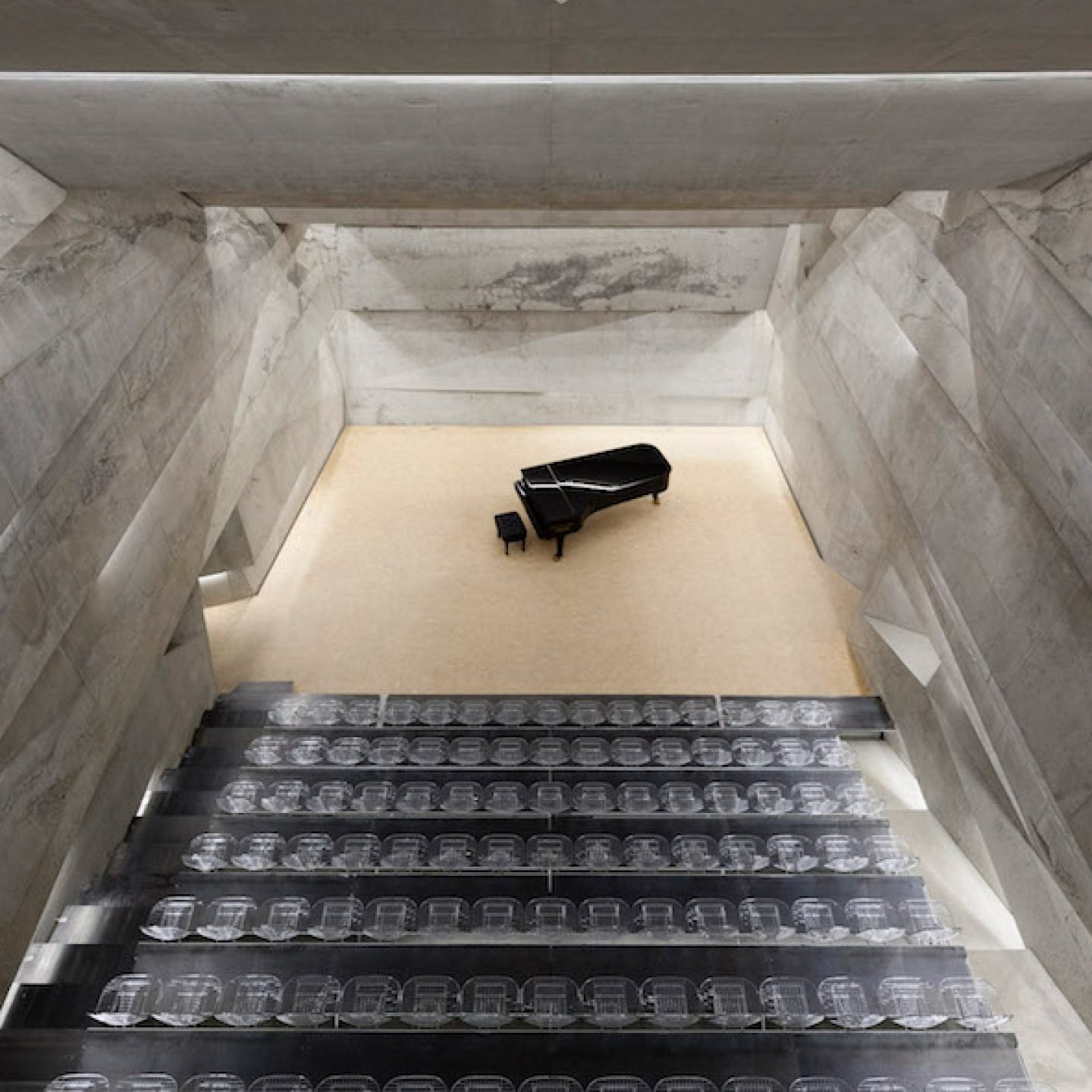
Konzerthaus Blaibach · Bavarian Forest, Germany
- Location
- Blaibach · Germany
- Words
- Anna Dorothea Ker
Jutting above the earth in a small square in rural Bavaria is a boxy stone structure tilting up towards the sky. Upon closer inspection, an entranceway leading down an expansive staircase to a subterranean space reveals itself.
Konzerthaus Blaibach is not only a building shaped by a visionary design philosophy, but also a testament to the power of architecture and culture to revitalize an entire town. The structure, designed in 2014 by German architect Peter Haimerl, is not only a building shaped by a visionary design philosophy, but also a testament to the power of architecture and culture to revitalize an entire town.
Originally built as part of an urban development project to reinvigorate the village of Blaibach, the concert hall has already become a beacon of culture that has stirred the small town back to life, and captured the attention of classical music aficionados who make the journey to visit the concert hall in the depths of the Bavarian Forest from all around the world.
As intrigued by the concert hall’s artistic programme as we were by its architecture, we spoke to Thomas E. Bauer, Director of Culture at the Festspiele Bayerischer Wald about the building’s design features, his vision for the hall’s artistic direction, and how Konzerthaus Blaibach came to be an icon on the classical music circuit within the first year of its existence.
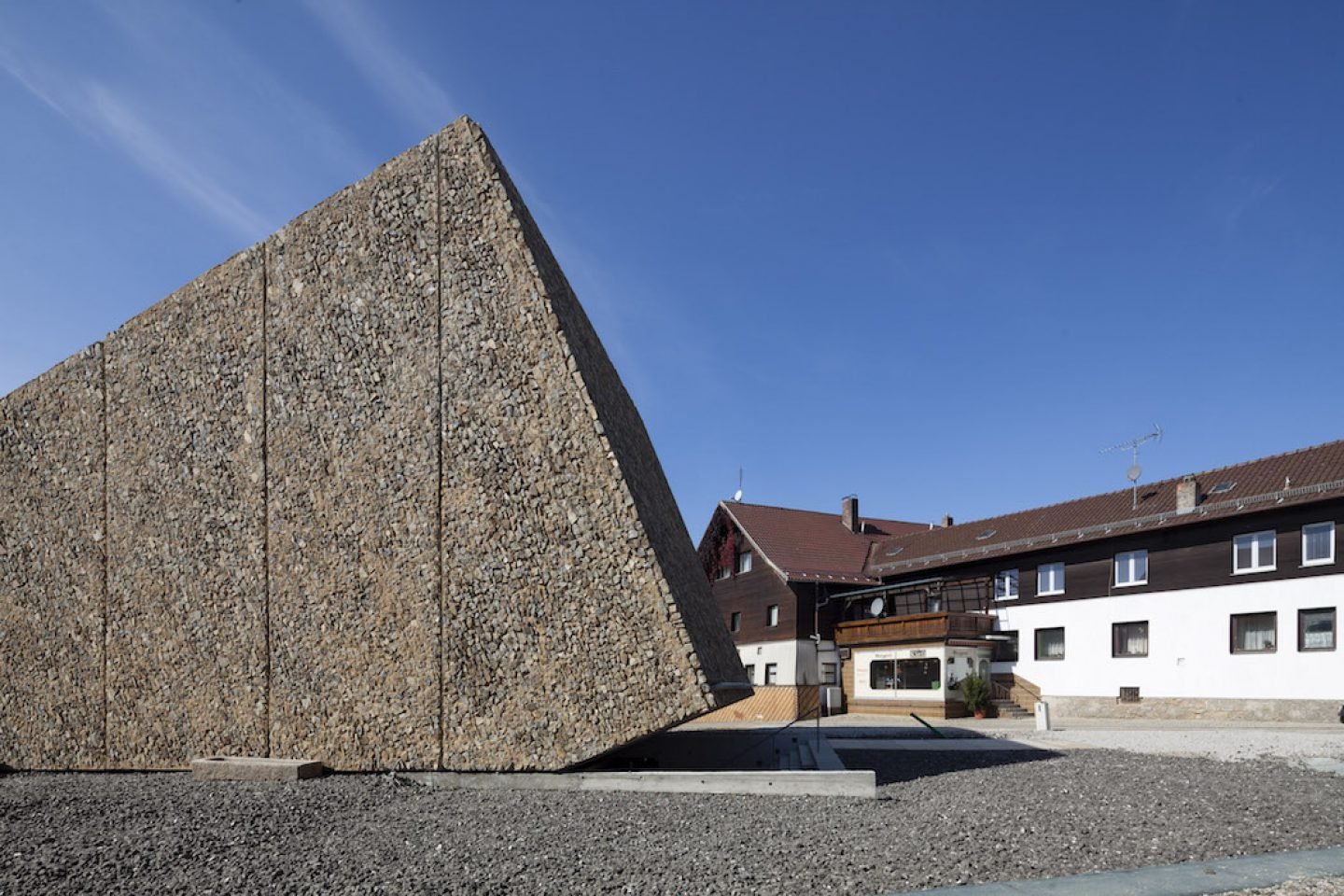
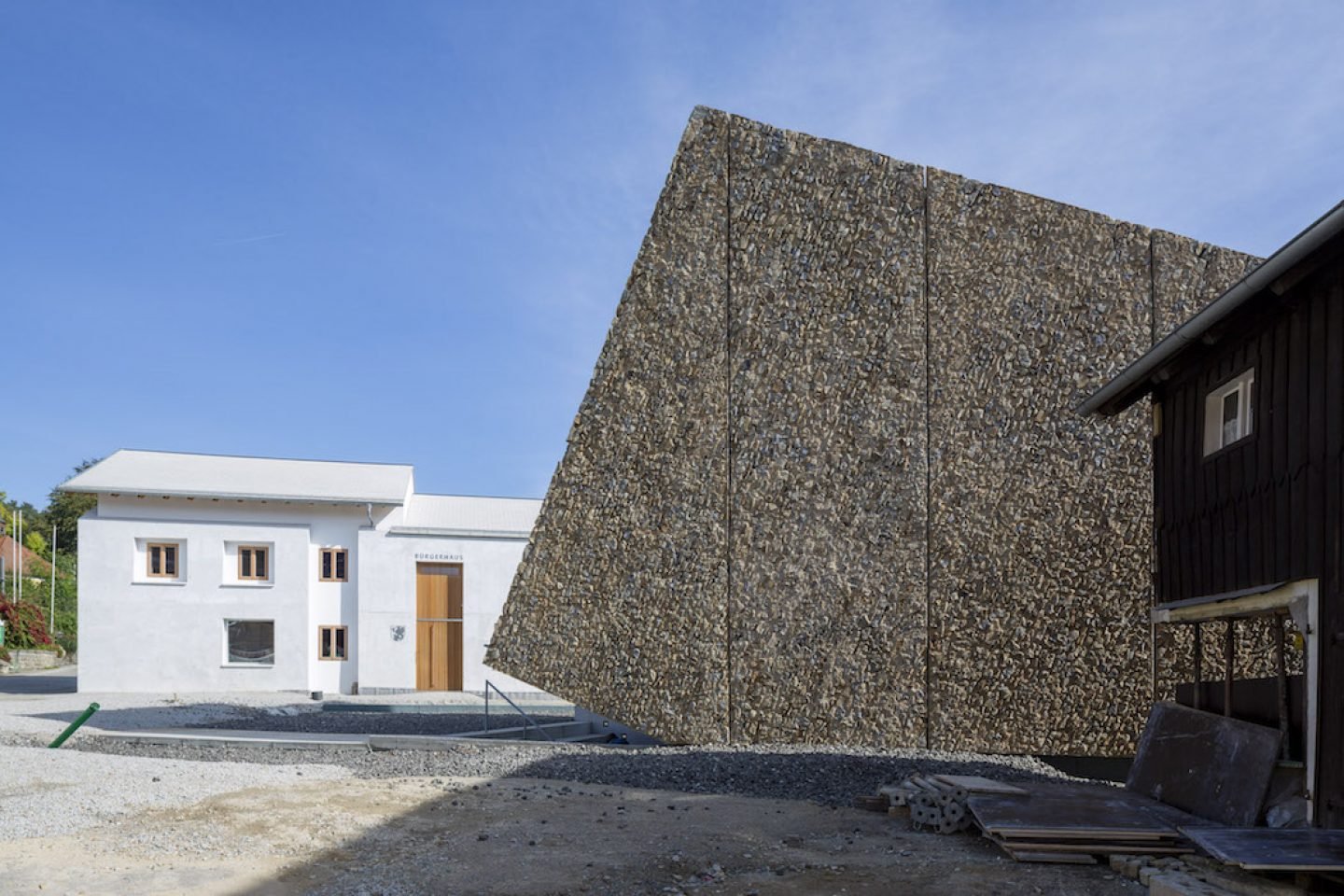
Konzerthaus Blaibach was designed in 2014 as part of an urban development project to revitalize the town’s center. What importance does the concert hall have to the local community?
“Our brief with the concert hall was to revitalise the town’s infrastructure through architecture and culture.”Thomas E. Bauer: Rural towns across Europe all face similar challenges: an aging, declining population and the reorientation of tourism. This was certainly the case for the town of Blaibach. Our brief with the concert hall was to revitalise the town’s infrastructure through architecture and culture. One and a half years after the opening of the concert hall, the effects are already tangible. A once ramshackle village has been reactivated as a lively historical center. The local hospitality scene is flourishing, and Blaibach has become the destination on everyone’s lips within the international classical music scene.
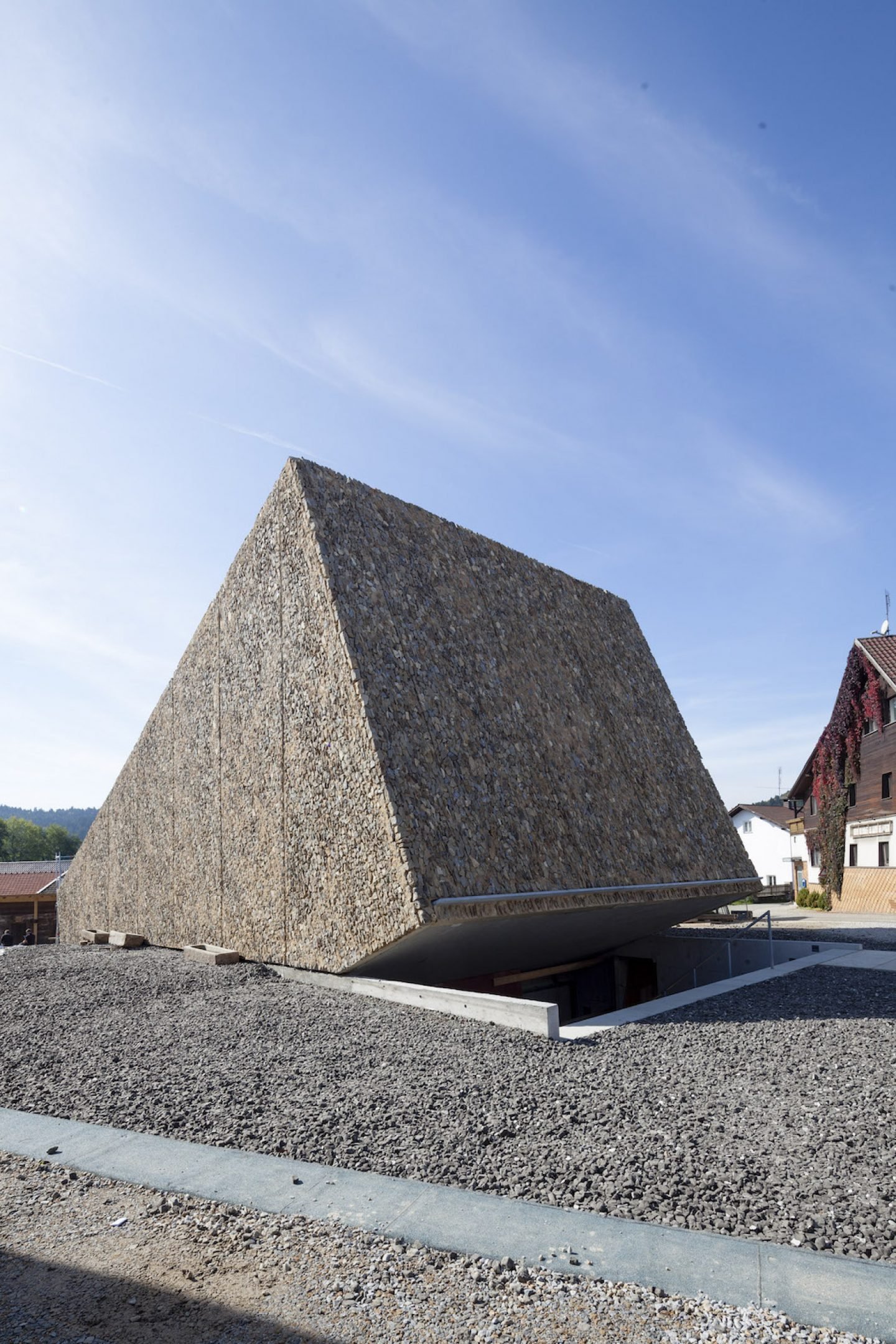
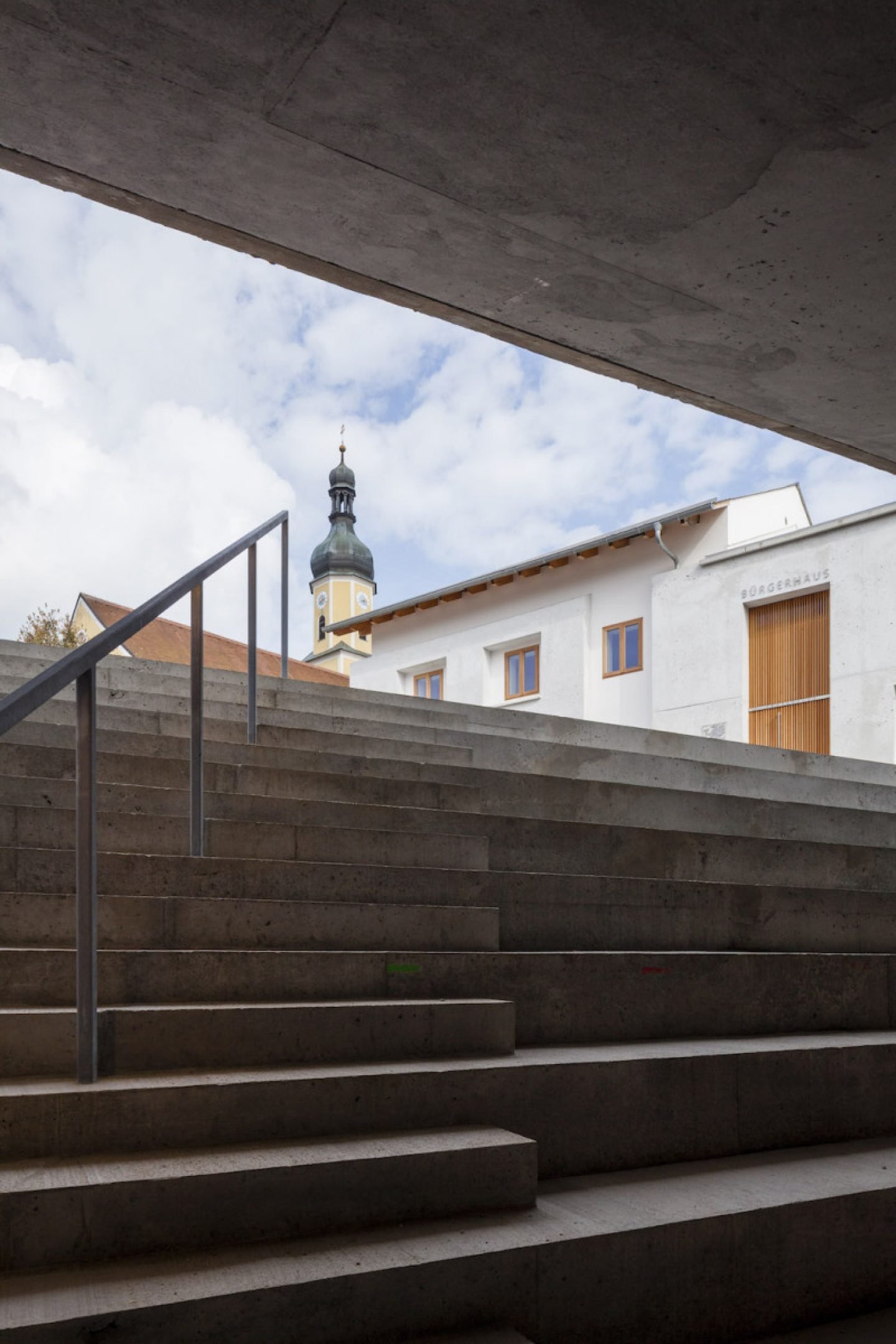
The hall’s granite facade mirrors the traditional stone carving method typical of the local area. Can you tell us more about the design features implemented by architect Peter Haimerl?
Thomas E. Bauer: The key to Konzerthaus Blaibach’s success is that it attracts quality and a glimmer of the unexpected on every level, for which we have architect Peter Haimerl to thank. There is, first of all, the hall’s function, form and acoustics, which we worked together to design. Otherwise I just trusted the architect’s instincts. The result is a unique, innovative concert hall which brings together a variety of traditional building materials including wood, glass and granite in a contemporary, imaginative way.
The entrance to the subterranean concert hall leads visitors down a staircase into its foyer. What kind of psychological expectation does this descent create as guests enter the space?
“Visitors can lose themselves in the hall’s metaphorical catacombs, leaving behind their sense of orientation in relation to the outside world.”Thomas E. Bauer: There is absolutely a strong psychological component in the flow of visitors’ movements, which is hard to describe precisely. The entrance to the foyer is quite spectacular. Visitors can lose themselves in the hall’s metaphorical catacombes, leaving behind their sense of orientation in relation to the outside world. A sense of compression sets in. Entering the concert hall itself, however, visitors are welcomed by the sense of having arrived in a new sphere that seems to be infinitely removed from the village just above ground.
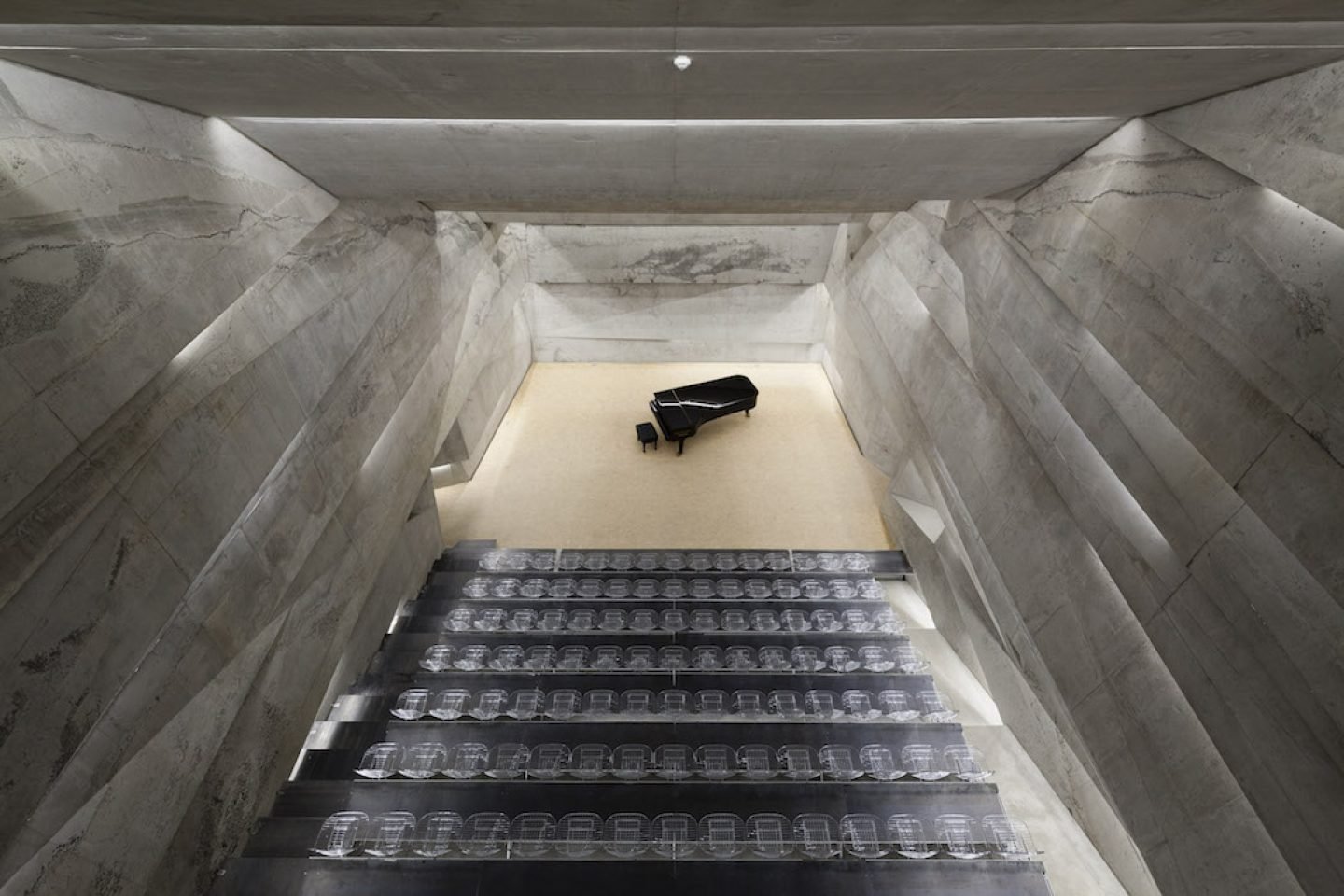
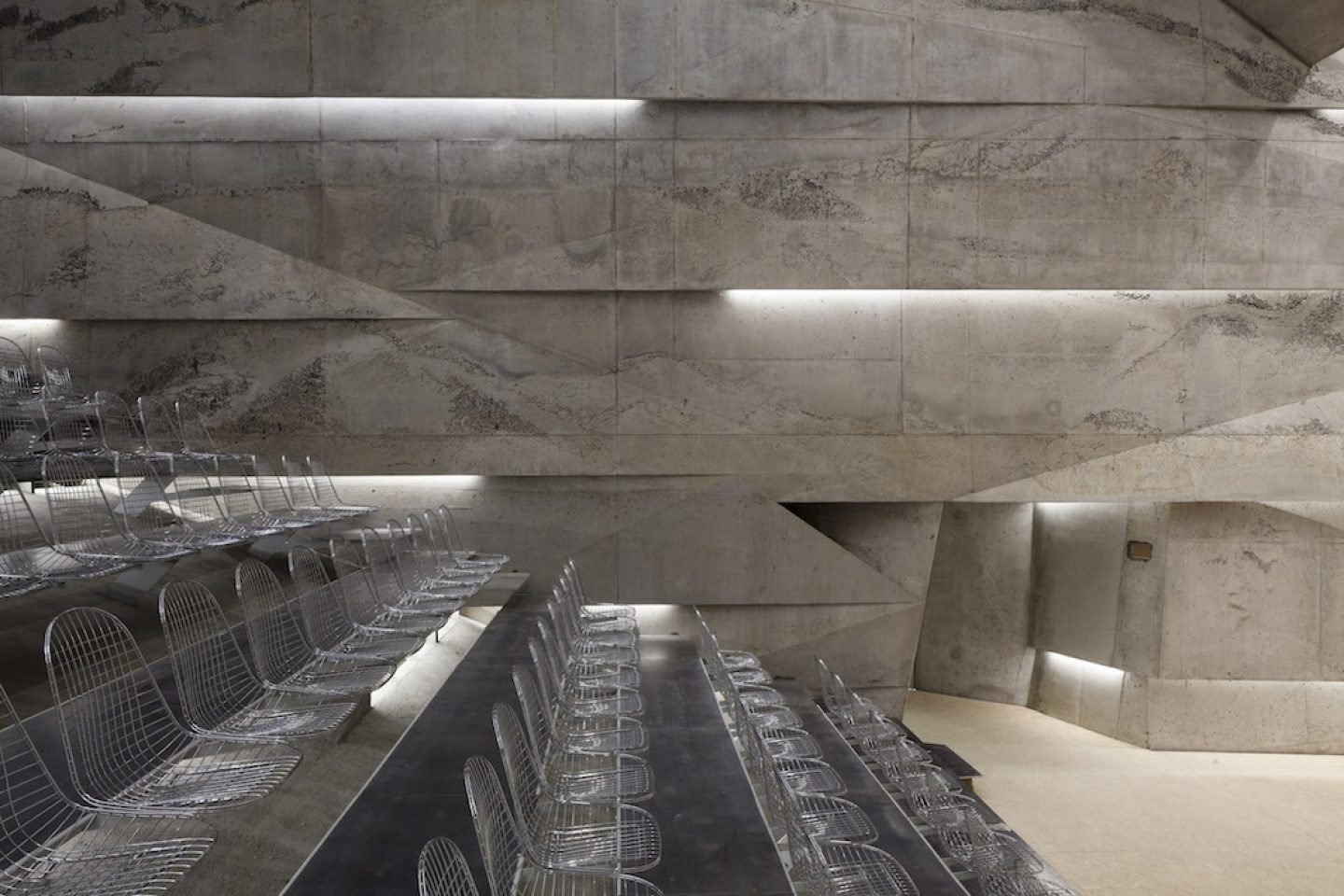
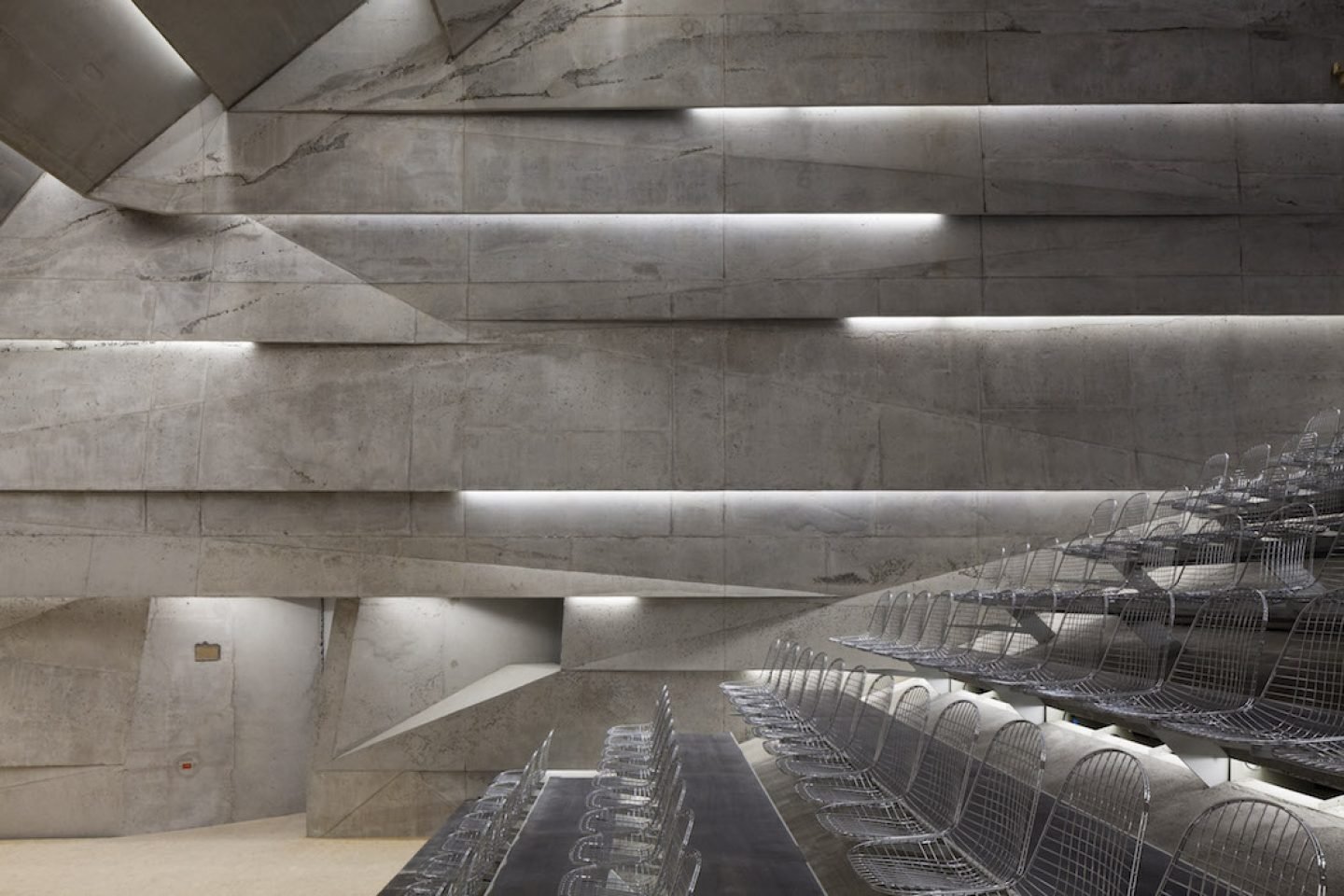
As a musician yourself, what is it about the concert hall’s acoustics that you most appreciate?
Thomas E. Bauer: You have to imagine the hall’s acoustics to be like an expensive stereo system. Every subtle detail of the music can be perceived from each seat in the house. As the volume of the sound and the number of musicians increases, a velvety layer of sound sets itself in over the noise. No matter how loud you turn up the volume on the system, the tone and quality of the sound stays consistent.
Light enters the performance space through slits in the concrete roof. How does this shape concert-goers’ experience?
Thomas E. Bauer: One of the amazing elements of the concert hall is that the entire technical infrastructure system reigns invisibly from behind the scenes. The indirect light can be controlled separately, allowing the stage area to be fully illuminated. Each of the hall’s functions are designed to allow the artistic performances to take center stage.
"Every subtle detail of the music can be perceived from each seat in the house. As the volume of the sound and the number of musicians increases, a velvety layer of sound sets itself in over the noise."
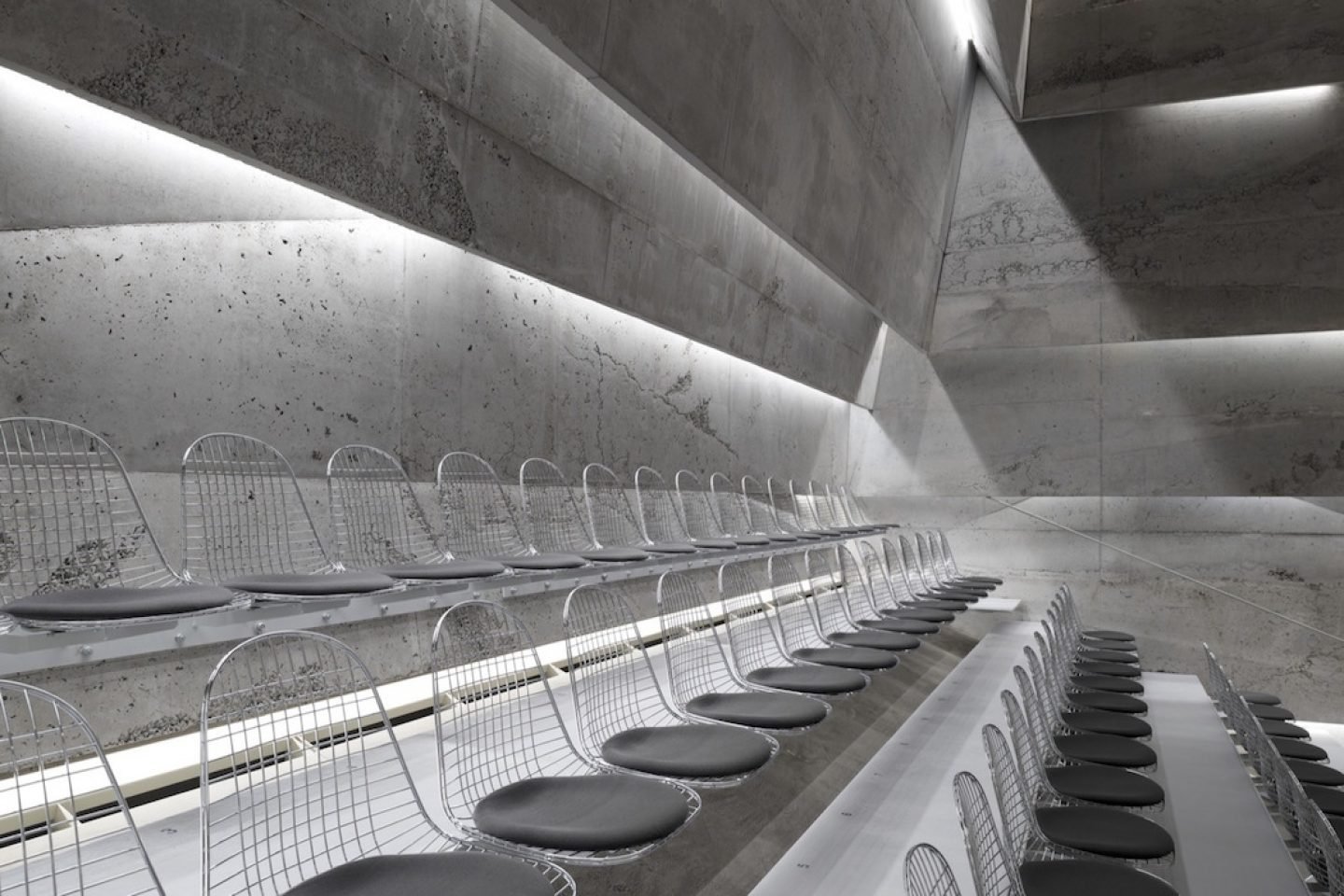
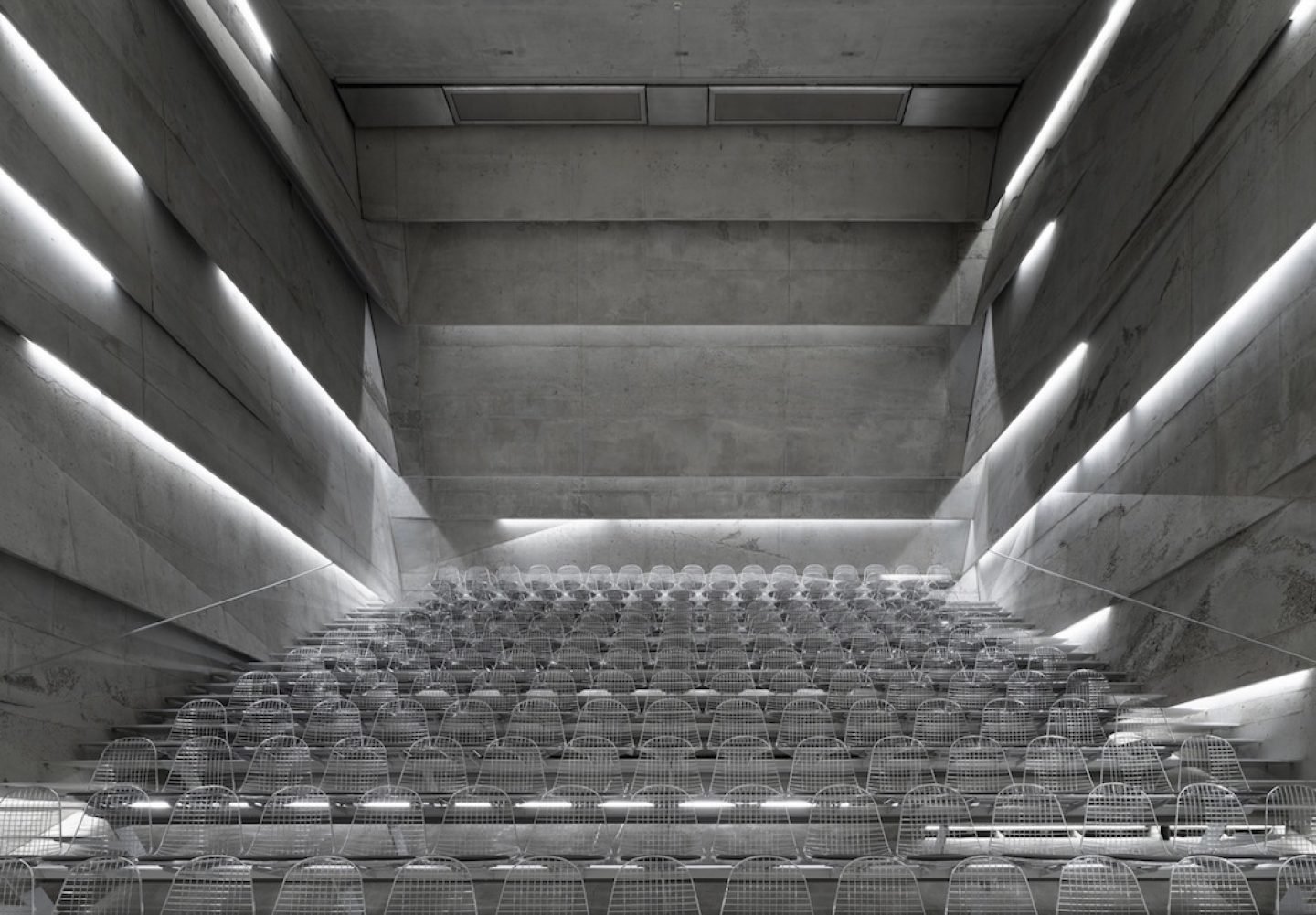
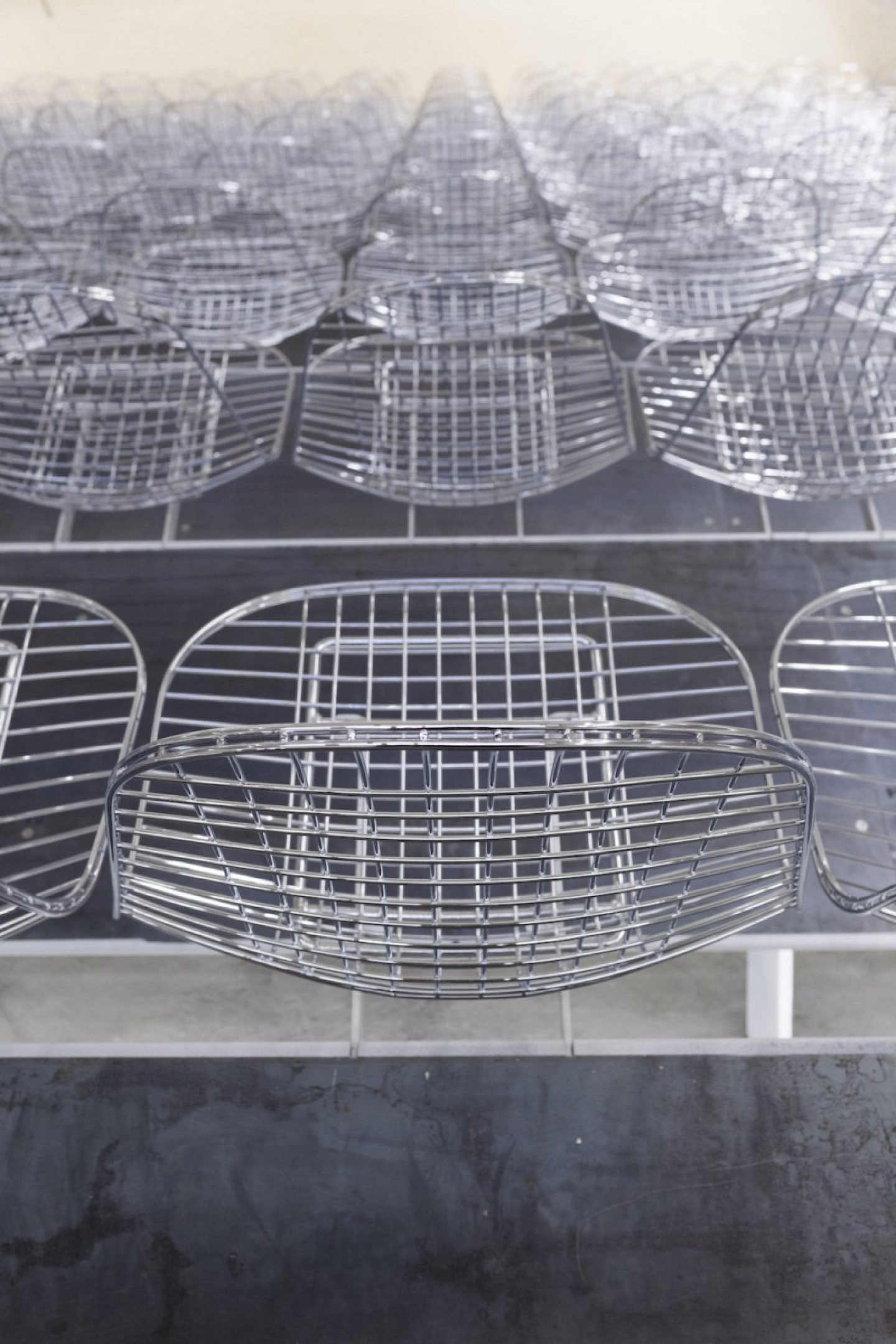
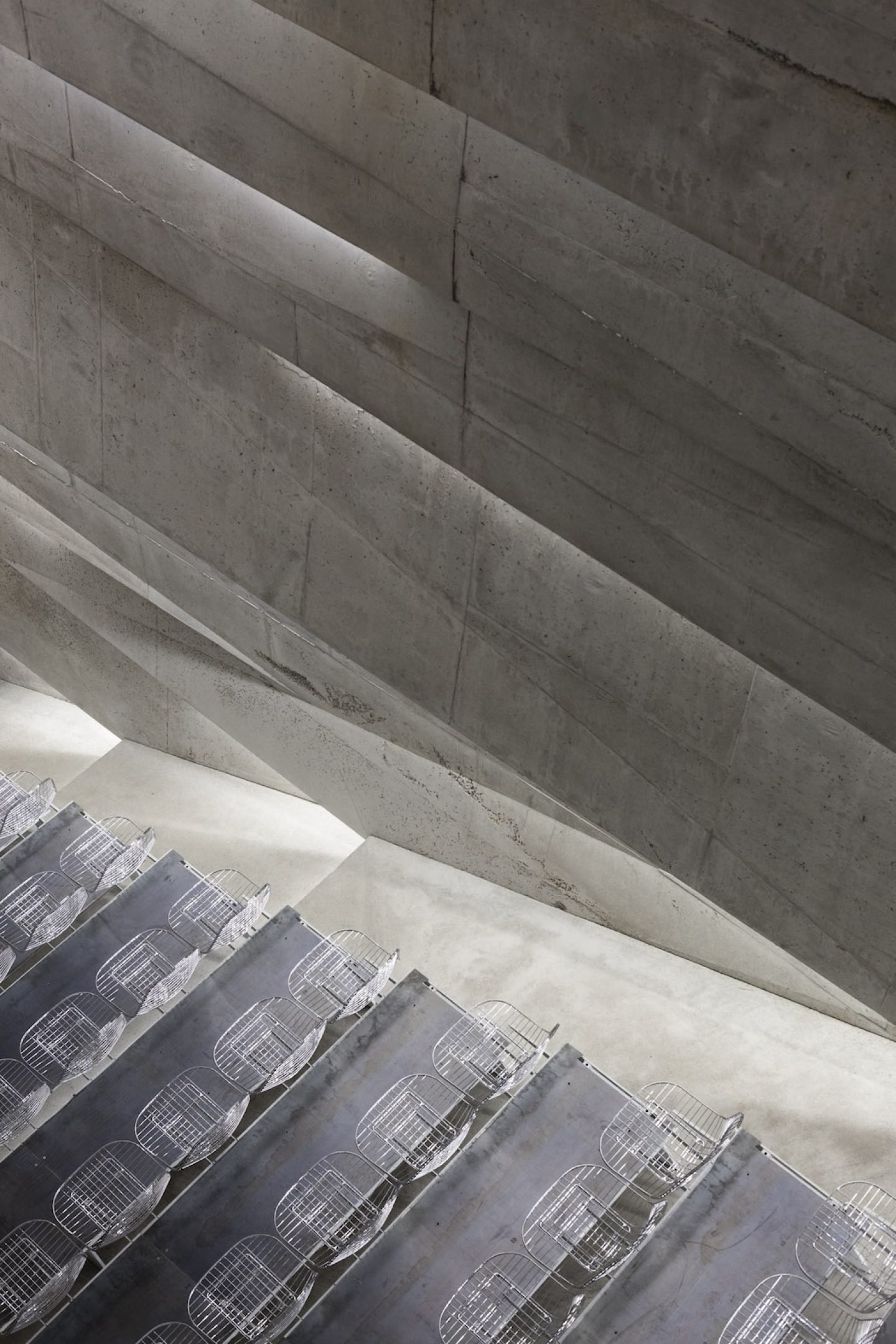
Can you describe to us what it’s like to perform on a stage that looks up and out to the audience, who are seated on clear tiered chairs?
Thomas E. Bauer: The arrangement is basically a prototype within the performing arts, similar to that of a Greek amphitheater. The artists send their messages upwards, lifting their voices. I’ve personally sung in over 1,000 concerts throughout the past 10 years, and this set-up has always been my preference.
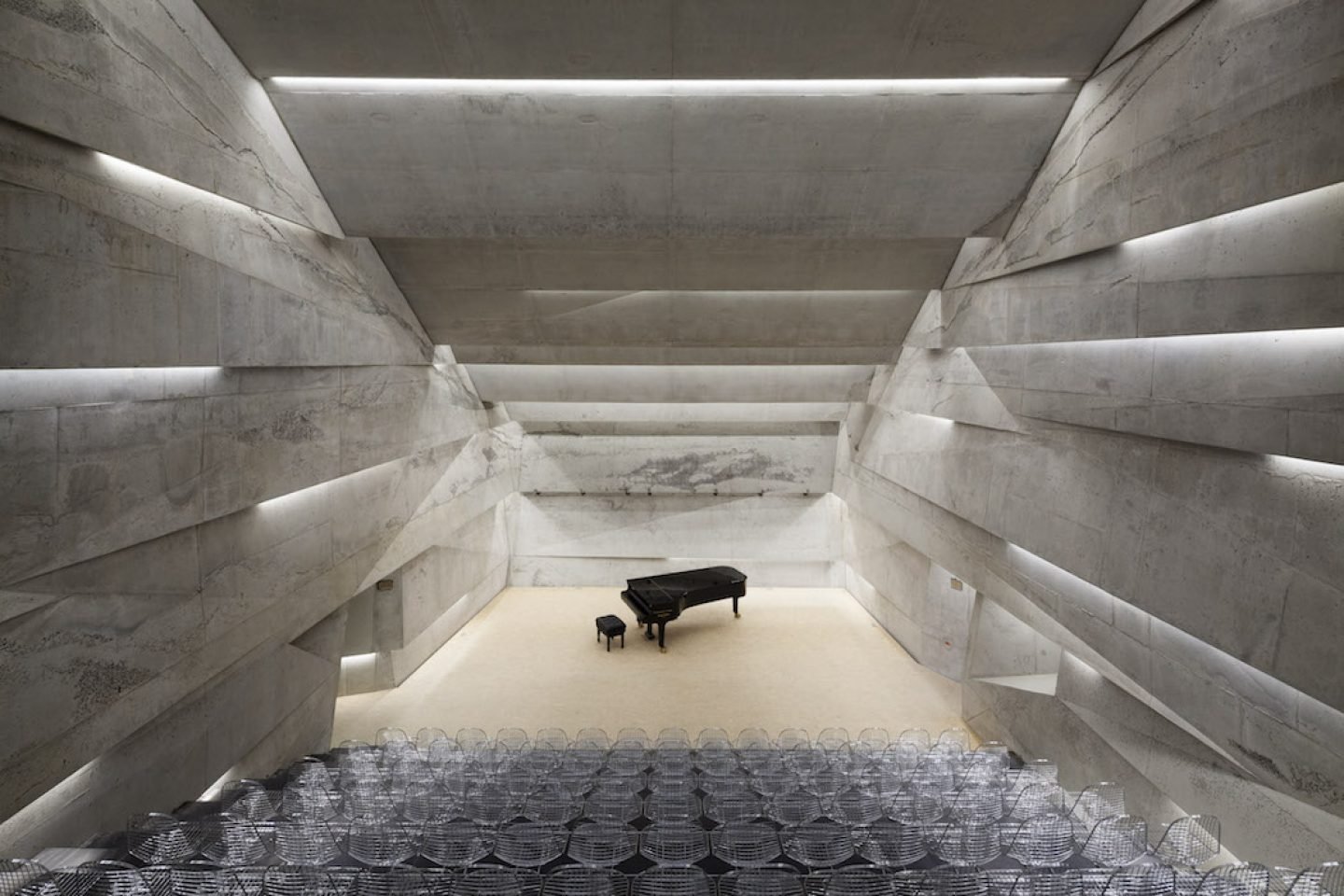
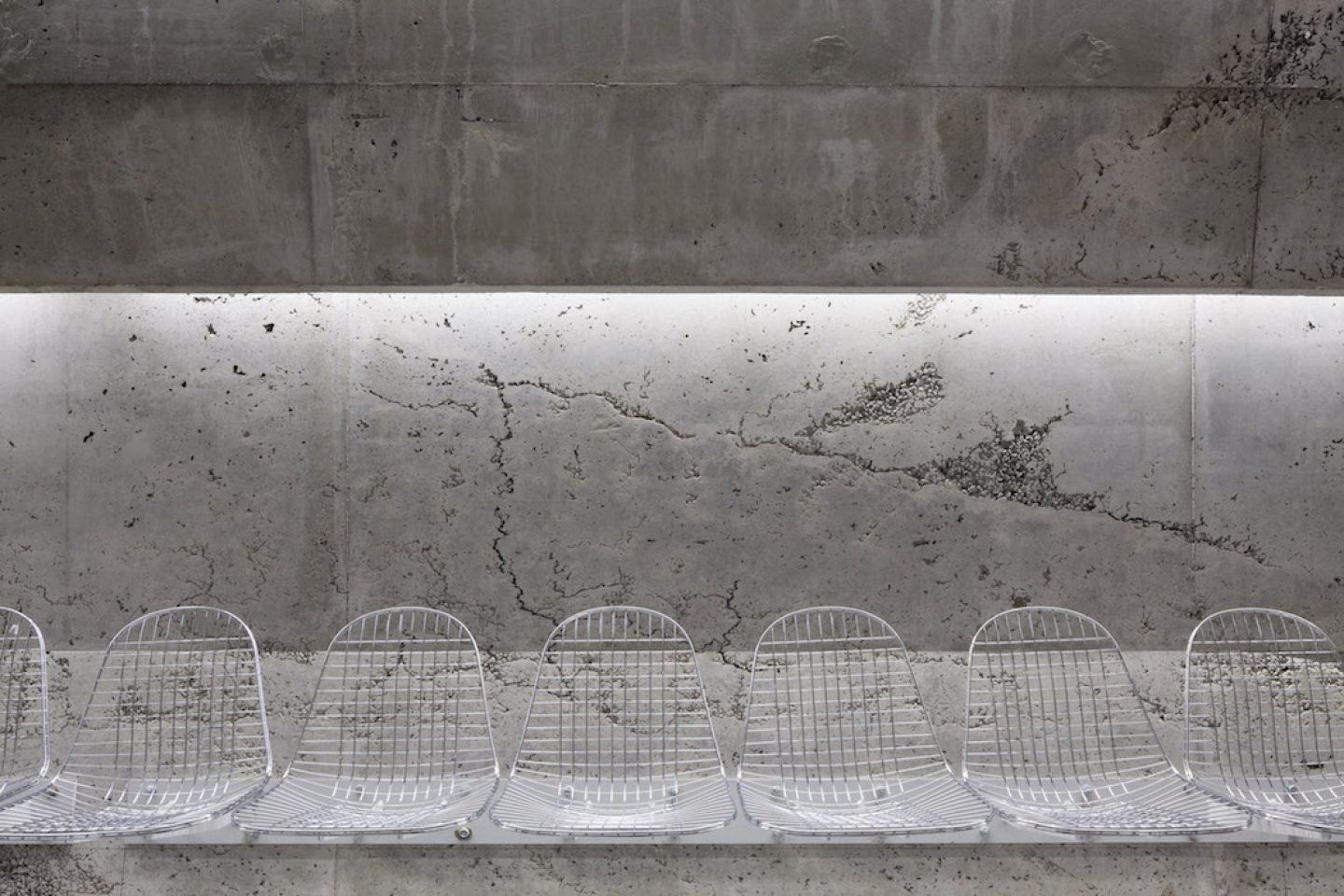
The concert hall’s programme includes a wide variety of internationally-renowned acts. Describe to us the planning process that goes into creating it.
“The musicians generally just play the music that’s particularly important to them at the time. This approach has made for some of the most exciting and moving programmes around.”Thomas E. Bauer: Through my own artistic practice, I’m in constant communication with interesting artists from all around the world. It means a lot that these artists are able to experience our region in the Bavarian forest, with all its profound mysteries. It’s equally important to me that the audience has access to rigorous and demanding programmes. This requires a certain sense of closeness which I would argue is quite unique to us, and perhaps due to the fact that the gatherings in our little village are so warm and open that the big names in classical performance feel welcomed into the community in a special way. The Bavarian way of life also has something to do with it, I think. We hardly have any specifications for the artistic programme. The musicians generally just play the music that’s particularly important to them at the time. This approach has made for some of the most exciting and moving programmes around.
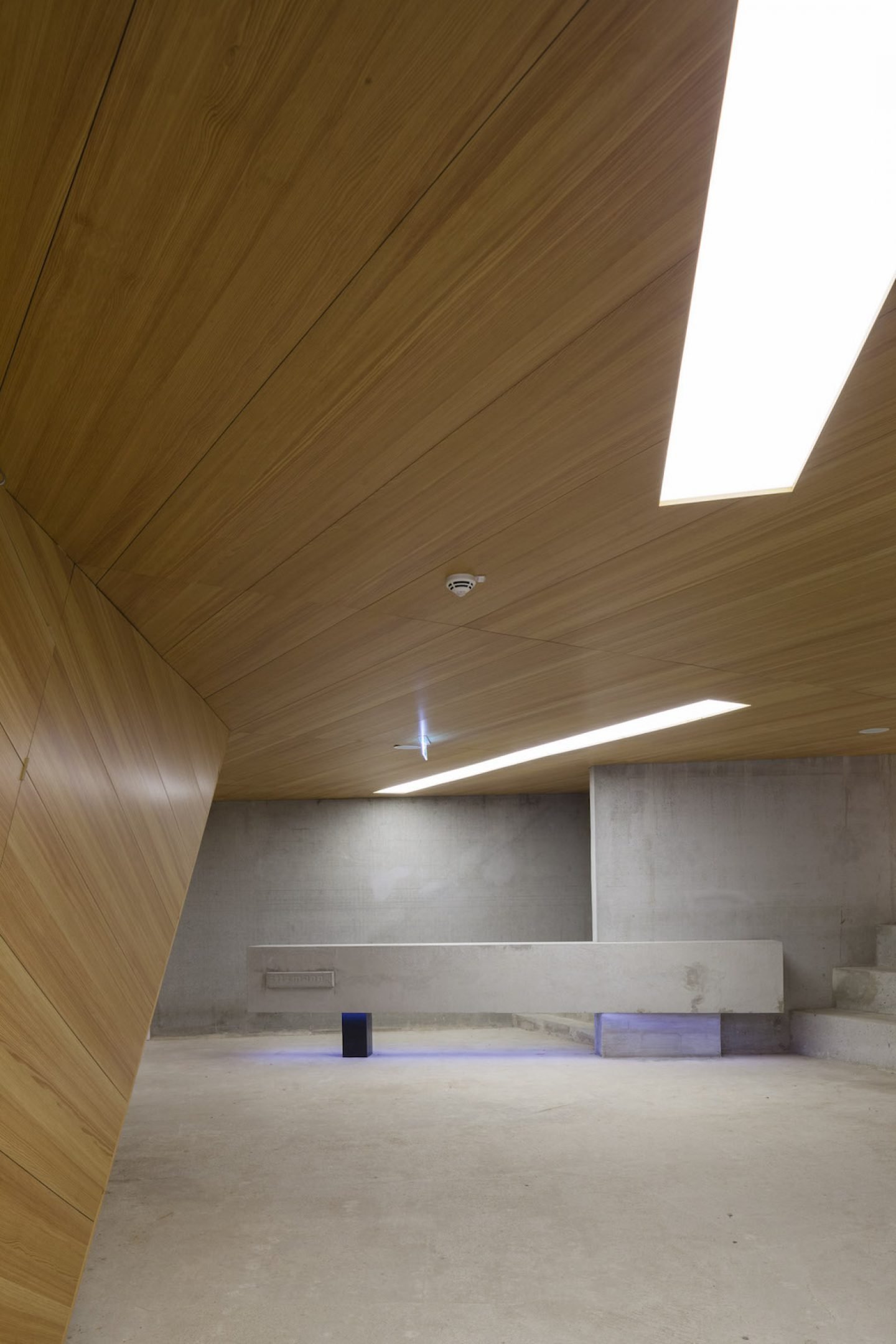
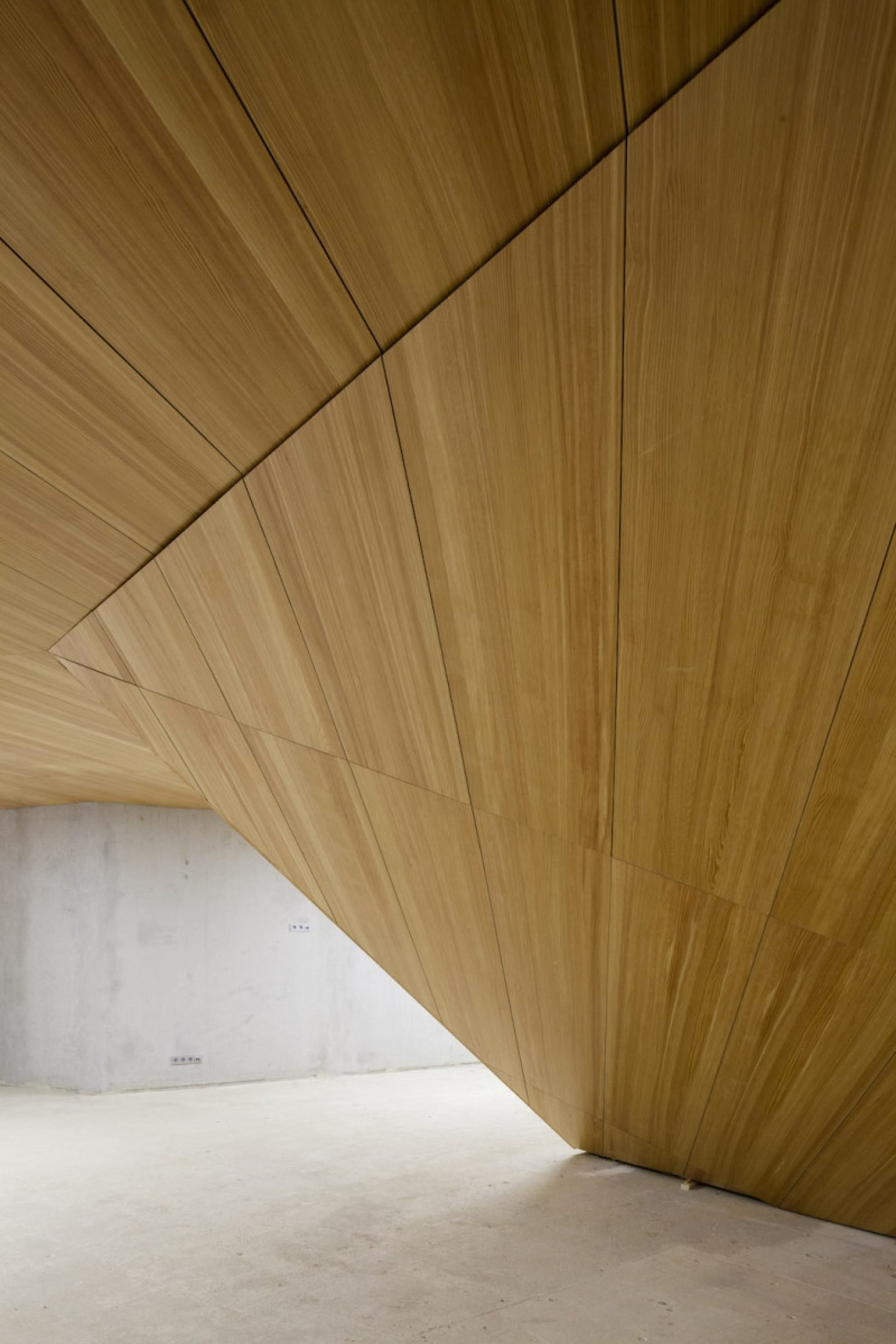
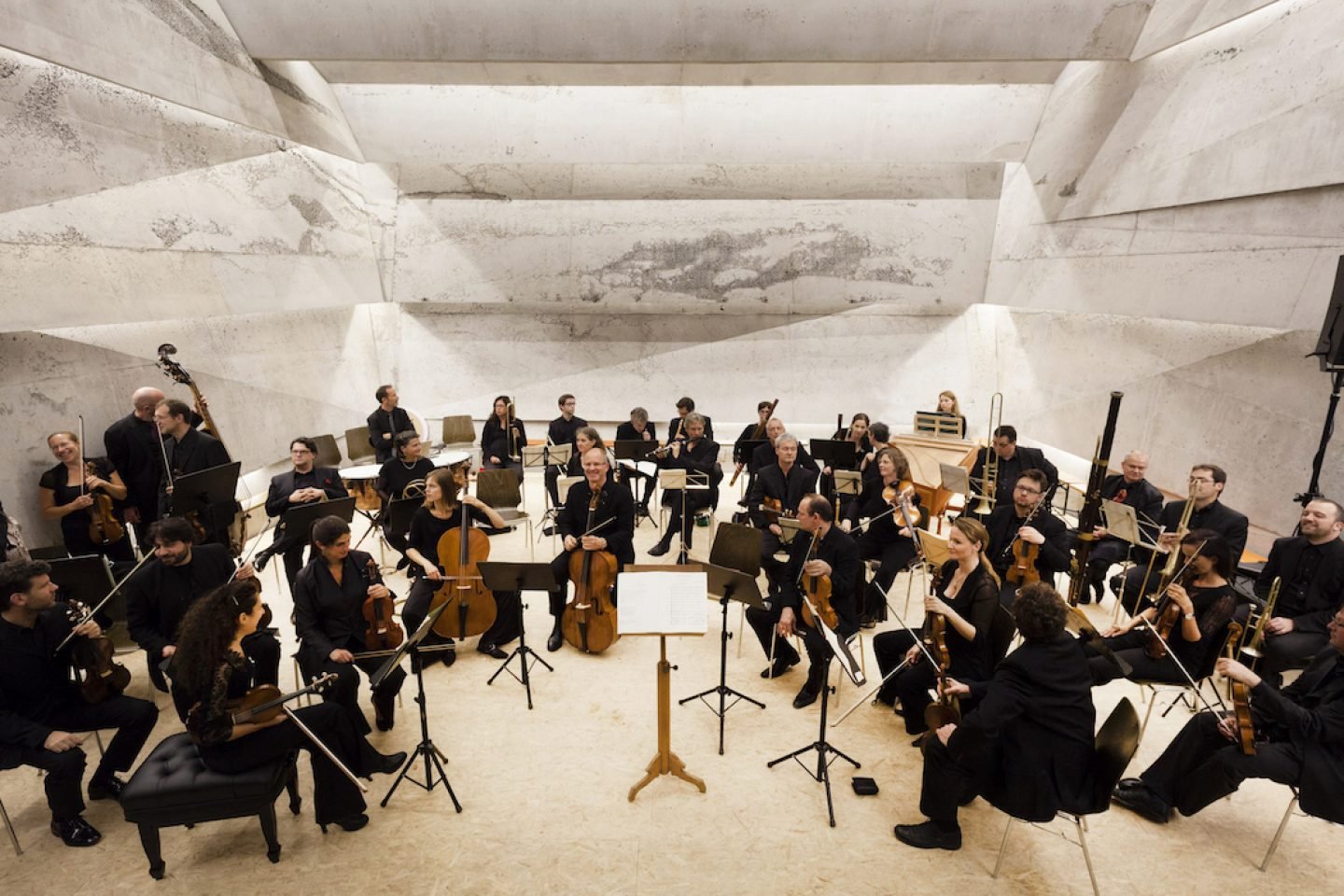
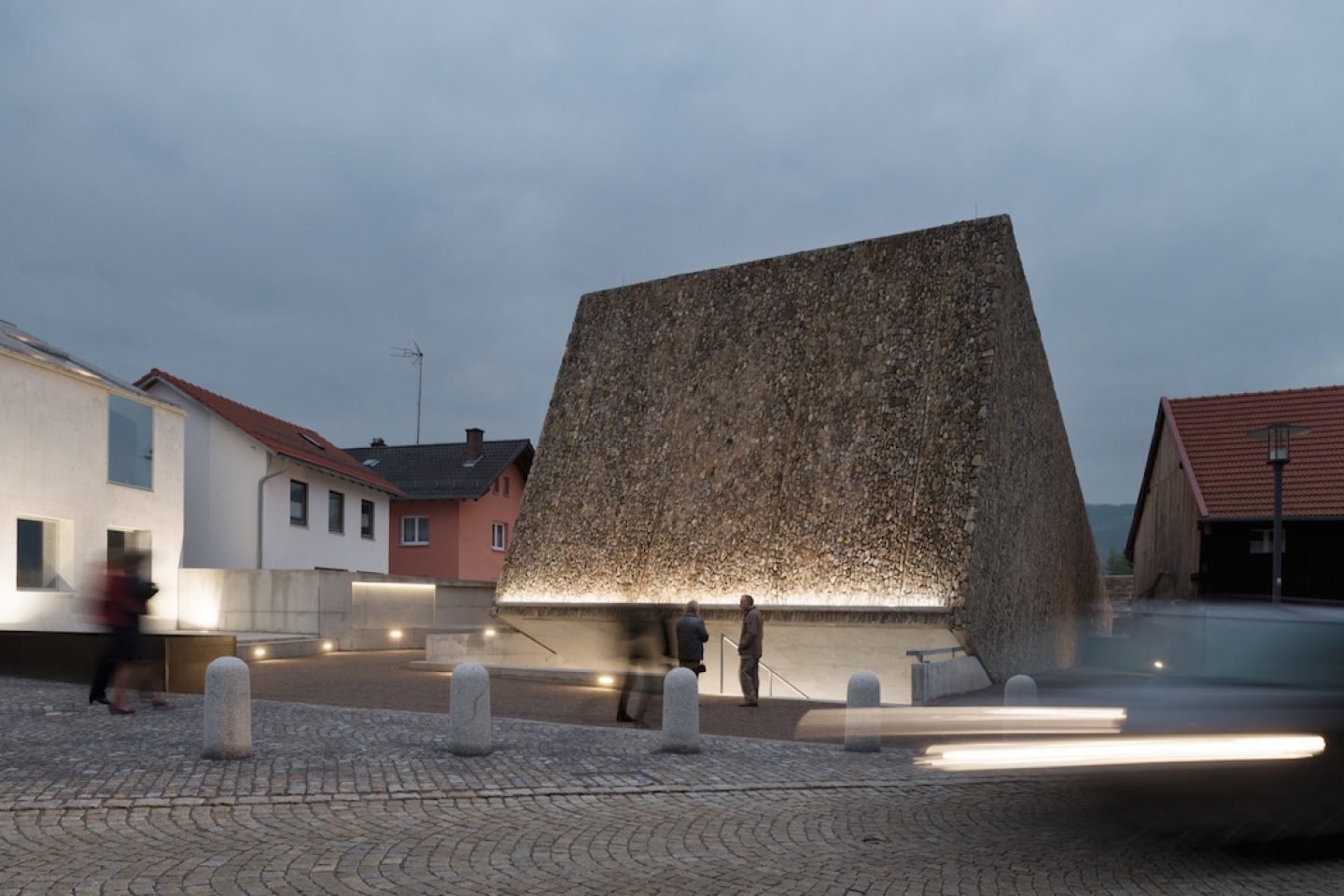
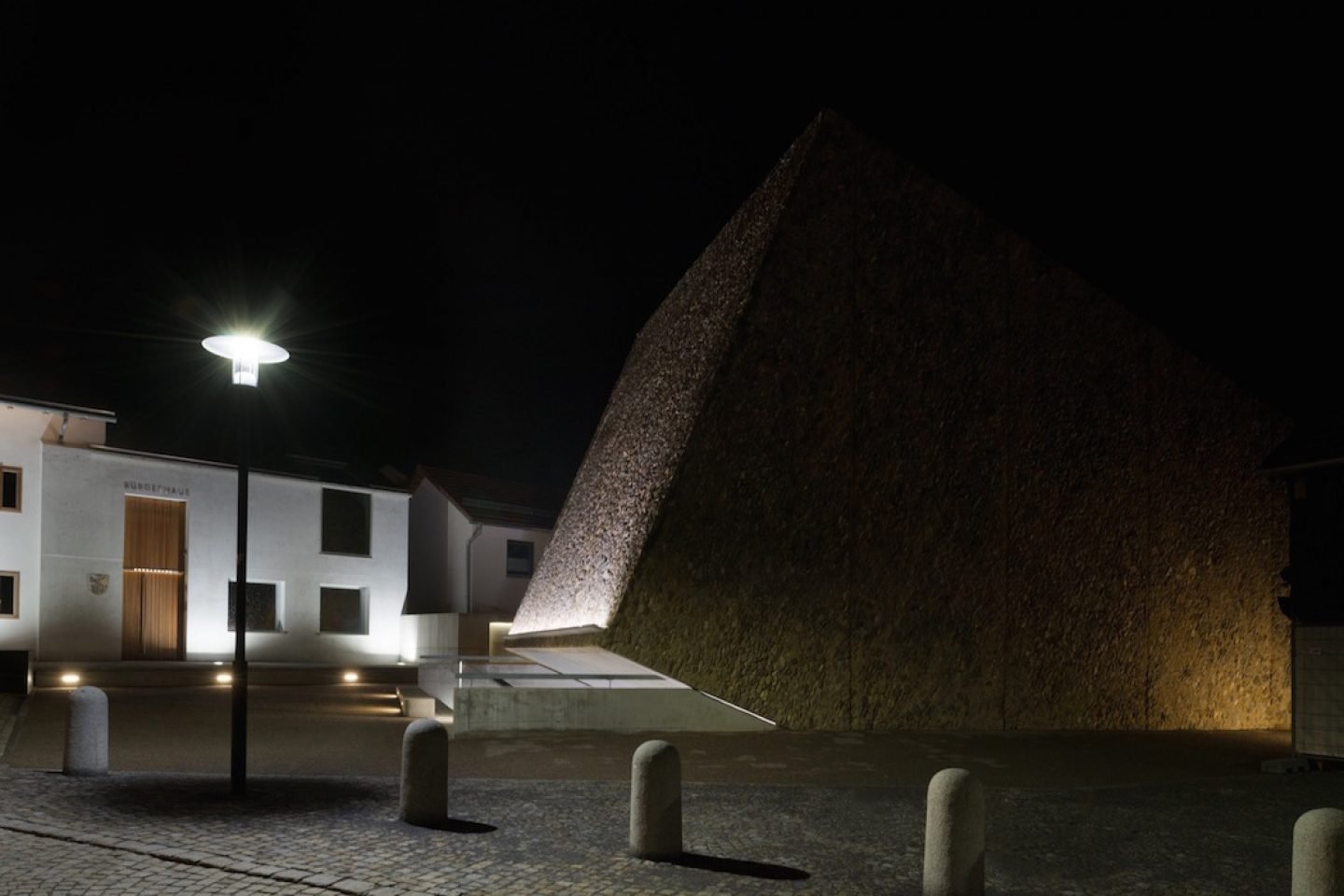
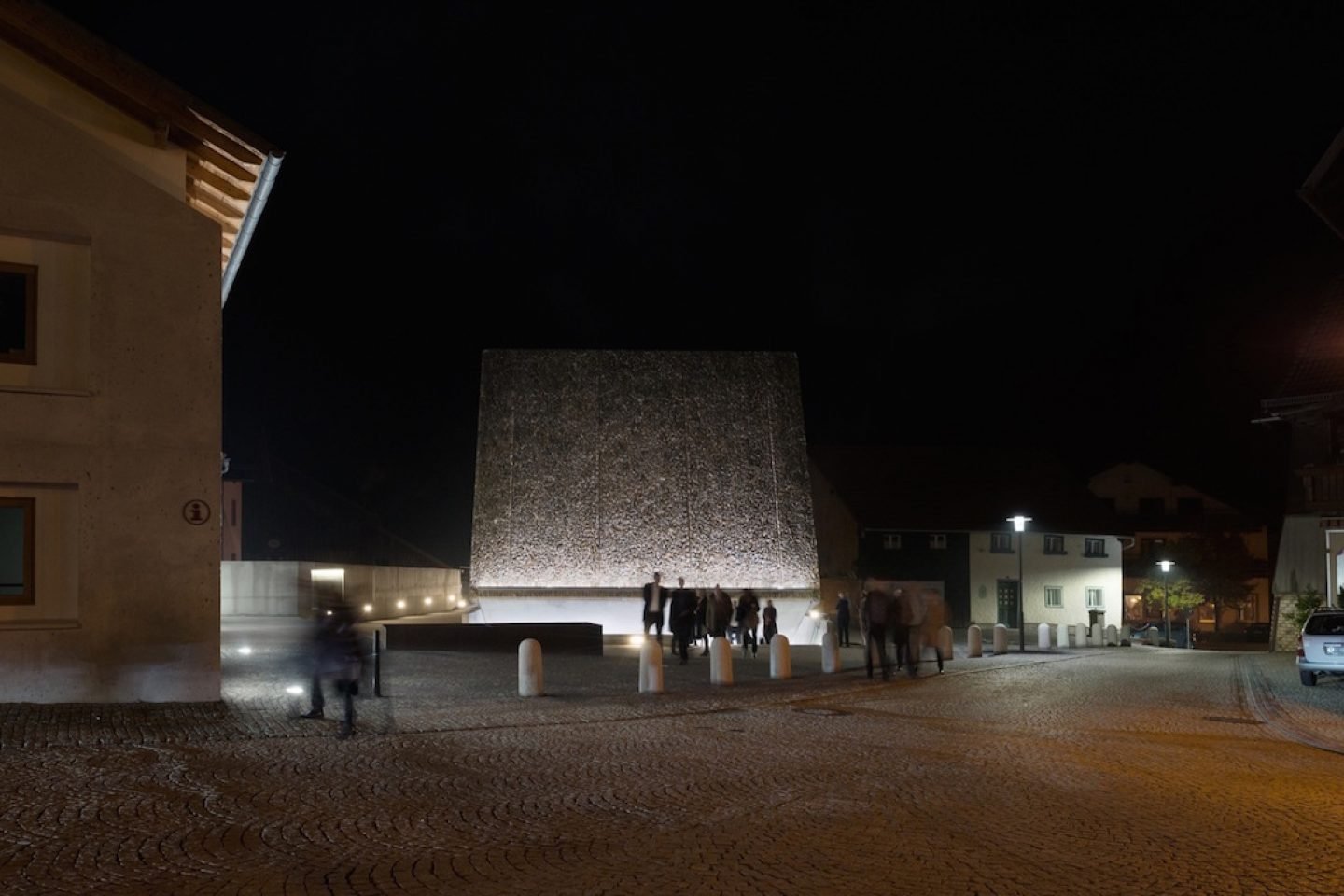
How do you hope to develop the artistic vision for the concert hall over the next year?
Thomas E. Bauer: Konzerthaus Blaibach already seems to have attained a mythical status in a short amount of time. Every day I’m contacted by artists who would like to play with us. When I look ahead to the upcoming season, I can hardly believe that our little one-horse town has become a hub of the international classical music scene. Ever more music lovers are willing to make the journey to be part of this little miracle. Concerts have been booking out fast for a while now, and we’re almost always at 100% capacity. I think that if we continue to operate on a high quality level, staying curious, open-minded and inclusive, then I have a good feeling about the artistic direction and continued popularity of this exceptional little concert hall in the depths of the Bavarian forest.
"When I look ahead to the upcoming season, I can hardly believe that our little one-horse town has become a hub of the international classical music scene."
Konzerthaus Blaibach
Kirchplatz 4a, 93476 Blaibach, Germany
All images © Edward Beierle / NAARO
